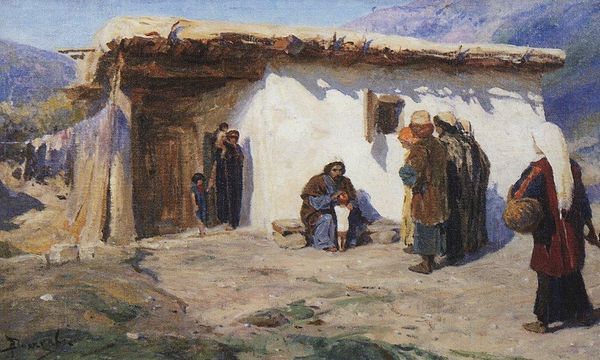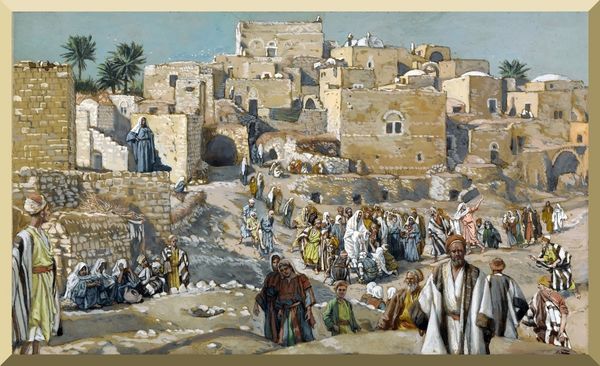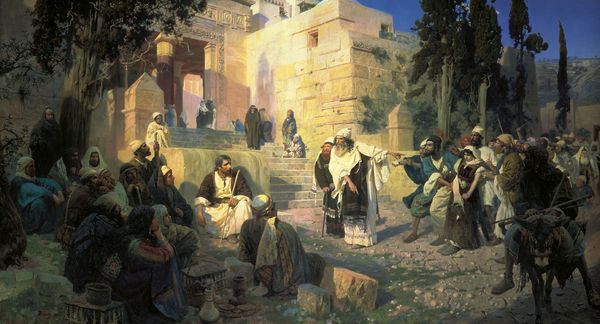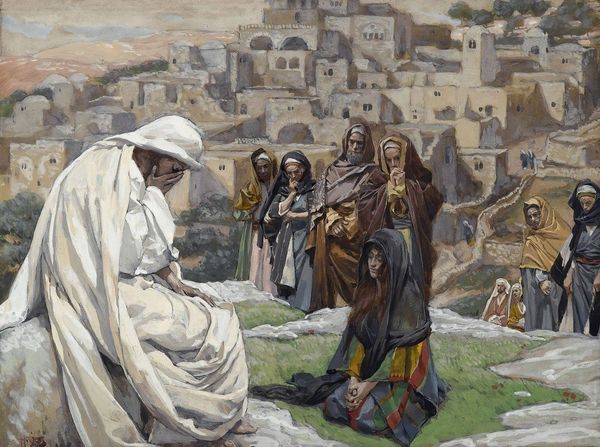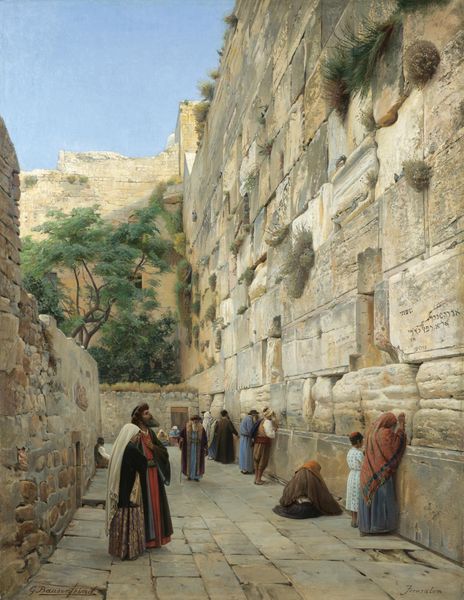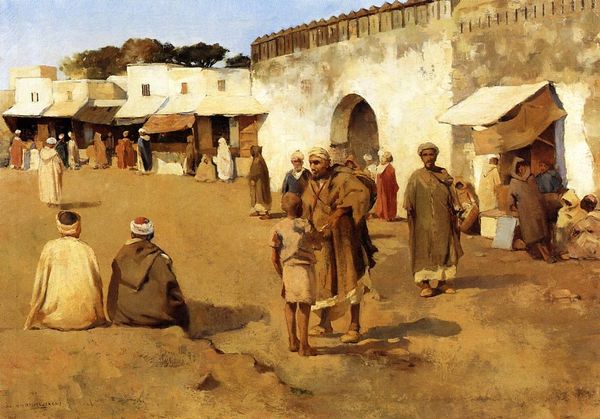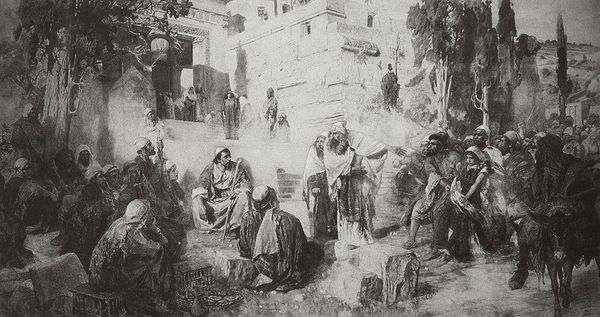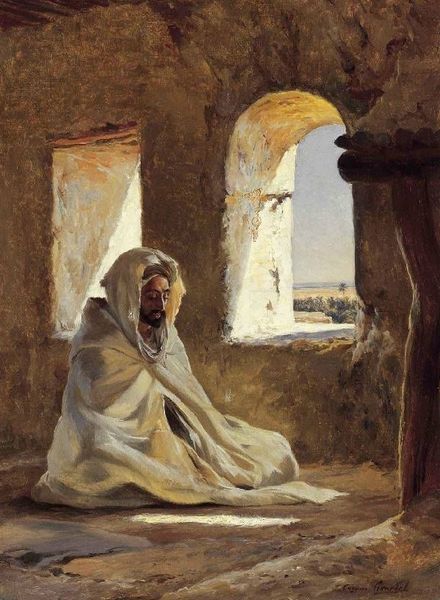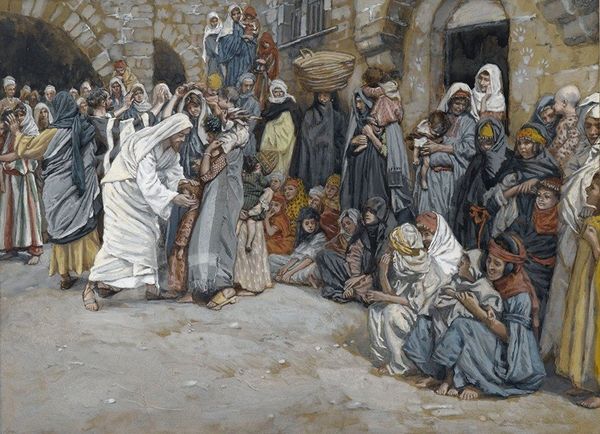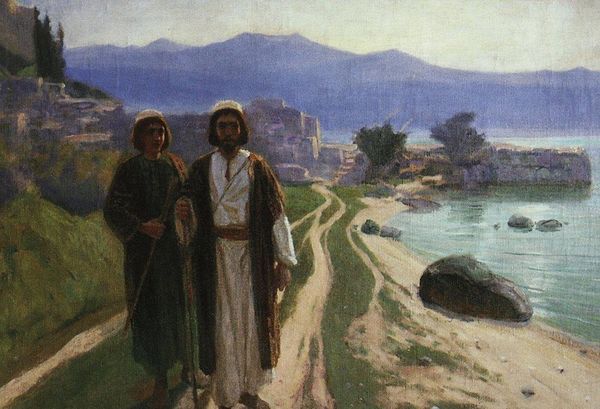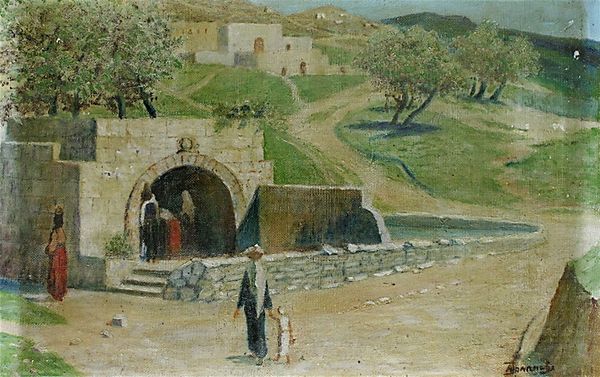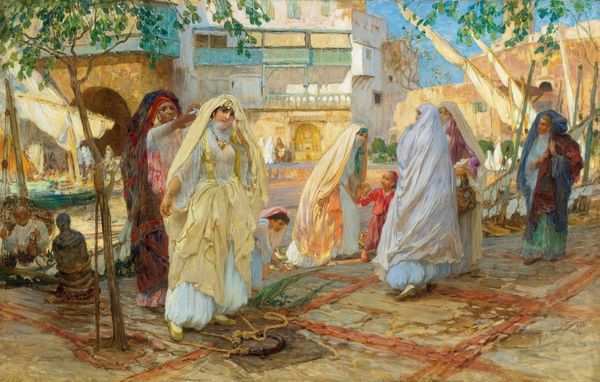
painting, oil-paint, architecture
#
painting
#
impressionism
#
impressionist painting style
#
oil-paint
#
landscape
#
holy-places
#
impressionist landscape
#
oil painting
#
mountain
#
naturalistic tone
#
arch
#
orientalism
#
academic-art
#
naturalism
#
architecture
Copyright: Public domain
Curator: Vasily Polenov painted this serene vista, "Fountain of the Virgin Mary in Nazareth," in 1882 using oil on canvas. Editor: It has a quiet strength to it, almost a photographic snapshot. The light feels so direct, casting solid shadows that define the architecture and the figures. Curator: Indeed, Polenov’s artistic endeavors, particularly during his travels to the Middle East, reflect a search for historical accuracy blended with artistic expression. His paintings played a key role in shaping European perceptions about the region. This particular scene embodies the orientalist fascination of the period, where the representation of ‘the East’ was often romanticized, simplified, and seen as almost biblical. Editor: You can really see that intersection playing out here. On the one hand, it feels grounded by the sheer presence of these working women, rendered without heavy exoticism. Yet, that choice to show it from this idealized remove, emphasizing pastoral life in conjunction with a historical setting… it feels loaded. Were the lived experiences of these women flattened to fit within a predetermined European narrative? Curator: Polenov certainly participates in the aestheticizing of a place that holds deep historical and religious meaning, filtering it for a Western audience. The fountain, linked to the Virgin Mary, gains a hallowed aura through the painting's realistic but softened style. Polenov paints not merely a fountain, but a symbol. Editor: It's an intimate portrait that ultimately may be viewed through lenses that scrutinize Orientalism's broader politics. It's worth examining how images like these, depicting everyday life, both reveal and obscure realities in postcolonial contexts. Curator: Agreed. Examining the power structures inherent in such depictions opens vital dialogues. Thanks to Polenov’s skillful portrayal, we still engage critically with these long-standing representational issues today. Editor: It also underscores how a singular image, while beautiful and seemingly transparent, always stands at the intersection of art, power, and culture.
Comments
No comments
Be the first to comment and join the conversation on the ultimate creative platform.
